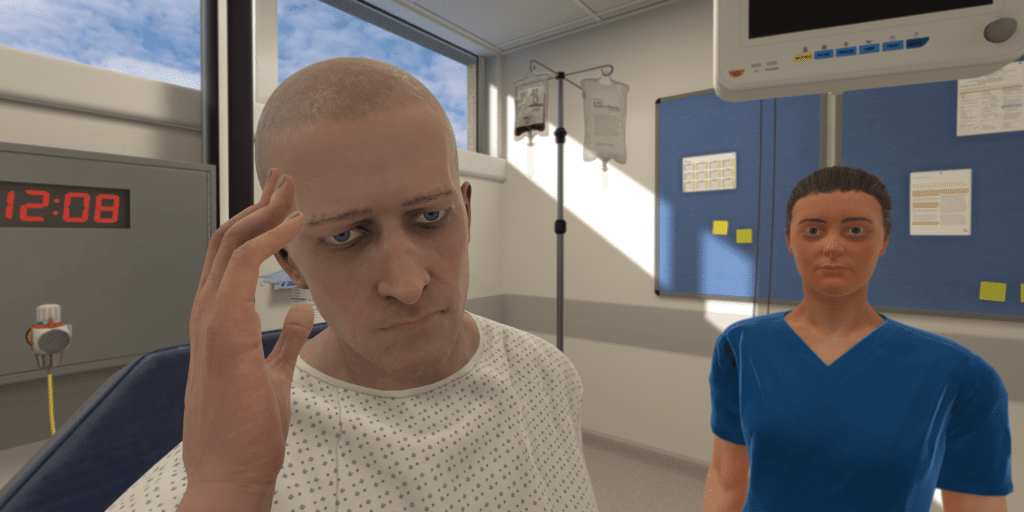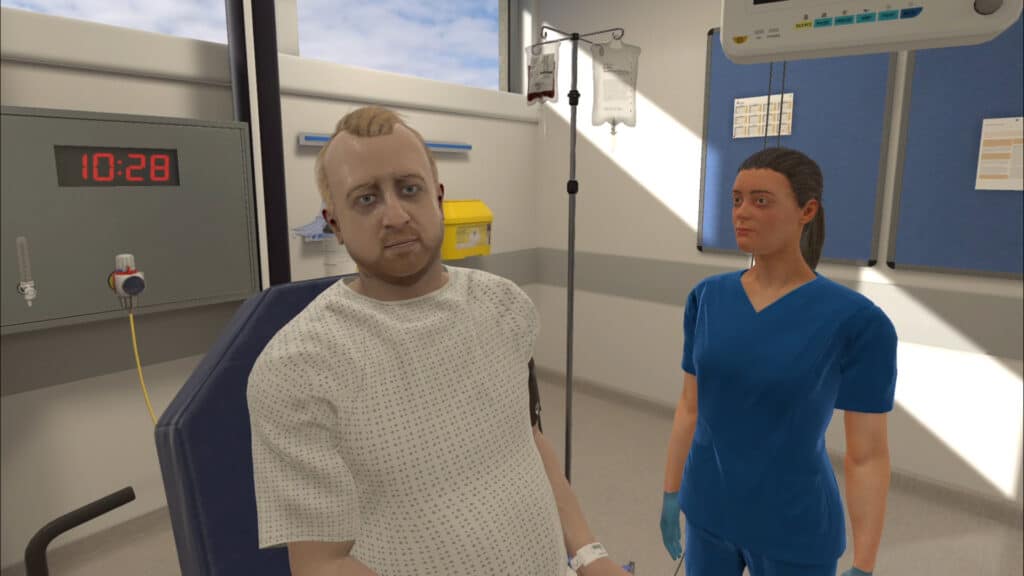Talking with a patient is one of the best ways for healthcare professionals to hone their communication skills – gathering history, explaining rationale, building rapport, or even having difficult conversations.
These ‘soft skills’ are not only vital for the patient experience but are also notoriously challenging to master without practical experience and feedback. So how can clinicians-of-tomorrow practice communication skills to deliver the highest-quality, most compassionate care possible?
Step into AI-powered VR simulations, where learners can practice speaking with patients in a risk-free & immersive environment; get immediate feedback, repeat until mastery, then put the knowledge learned back into practice with real patients.
The beauty of AI-powered patients – such as those from OMS – lies in its allowance for error without real-world consequences. Students and clinicians can experiment with various communication styles across a variety of scenarios, learning new lessons from each interaction, with patients adapting dynamically to the questions asked.
And with the latest OMS release comes 20 new scenarios, many of which are voice-controlled, enabling learners to converse directly with a wide variety of virtual patients. This added layer of authenticity and engagement is an exciting addition to the already vast suite of scenarios!
Who should use voice control in VR simulation?
For novice learners or those just beginning their journey into healthcare, modeled communication is often the best way. This involves learners selecting what they want to say from a set structure, hearing an idealized way to ask that question, and the patient responding appropriately. Learners can take this scaffolded structure and expert phrasing with them into practice.
This is a low stress, low cognitive-load, way of interacting that is perfect for junior learners. It can also allow more focus on the decision-making, clinical reasoning, and critical thinking aspects of scenarios, as the focus is actively not on the finer details of communication skills.
Voice control, however, adds an additional layer of complexity, nuance, and cognitive load to the simulation. It’s one thing to know all of the right questions to ask, but it’s a significantly more complex task to articulate these questions fluently and responsively in the unpredictable flow of human conversation.
Voice-controlled scenarios also allow for more direct interaction with virtual patients, providing an increased level of immersion and realism. Actually having a conversation – asking questions, providing education, or following up – requires adaptability and flexibility on the part of learners that may not be feasible to practice with other types of simulation.
In everyday life, people don’t always respond how you might expect, and voice control scenarios provide an avenue to practice navigating fluid situations and conversations with patients, caregivers, or relatives.

Which communication skills can you practice in OMS?
If you know, you know – there are lots of skills that fall under the ‘communication’ umbrella and, in practice, healthcare professionals often need to call on multiple skills throughout the day. OMS have built a suite of scenarios with these disparate skills in mind, including:
- Information gathering and building rapport
- History taking / patient interview
- Motivational interviewing
- De-escalation of an angry relative
- Difficult conversations
Over the coming months, learners will also be able to practice skills that include breaking bad news, shift-to-shift handoffs, and communicating using the SBAR method.
Throughout these scenarios, learners will need to use their communication skills in order to:
- Introduce themselves, ask appropriate & relevant questions, and obtain basic patient information
- Demonstrate active listening and build rapport with patients
- Treat patients holistically and collaborate with them to solve problems
- Engage in difficult conversations and provide education
- Communicate with empathy and compassion
Learners can even put these skills to use in a procedural scenario that reinforces concepts like setting expectations for a procedure, gaining appropriate consent, and answering questions about your treatment plan.
When providing care to patients, it’s not only essential to be able to communicate your thoughts but it’s also vital to understand and empathize to be able to form a therapeutic relationship. This dual-faceted approach is essential for holistic patient care and is central to how OMS scenarios are designed.
If you’d like to see a demonstration of voice control in action, set up a time to speak with us and see the power of using your voice in OMS.
